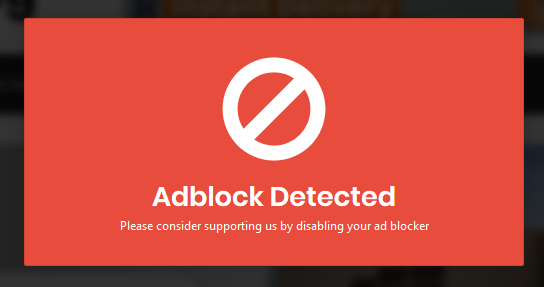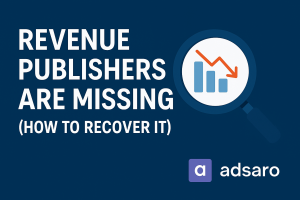In today’s digital landscape, bypassing adblockers in campaigns has become a critical challenge for advertisers and publishers. Adblockers are widely used by internet users to remove unwanted ads, but they also prevent legitimate and well-placed advertisements from reaching their target audience. This blog explores different types of adblockers, their impact on digital advertising, and proven strategies for bypassing adblockers successfully.

What Are Adblockers?
Bypassing adblockers in campaigns : ADBLOCKERS
Adblockers are software tools or browser extensions designed to block or filter ads from displaying on web pages. While these tools improve the user experience, they disrupt revenue streams for advertisers and publishers. Bypassing adblockers in campaigns requires an understanding of how these tools function and what strategies can help mitigate their effects.

Types of Adblockers
Bypassing adblockers in campaigns: TYPES
- Browser Extensions – Popular tools like AdBlock, uBlock Origin, and AdGuard work directly in browsers to filter out display and video ads.
- Network-Level Adblockers – These function at the ISP level or within corporate networks to prevent ads before they reach the user’s device.
- Mobile Adblockers – Mobile apps like Adblock Plus and Blokada filter ads across browsers and apps.
- Built-in Browser Adblockers – Browsers like Brave and Safari come with built-in adblocking features, making bypassing adblockers in campaigns more complex.

How Adblockers Affect Your Ad Campaigns
Bypassing adblockers in campaigns is crucial because these tools:
- Reduce Ad Impressions – If users don’t see your ads, it impacts CPM-based campaigns.
- Decrease Click-Through Rates (CTR) – Ads blocked before appearing lead to fewer clicks, affecting CPC models.
- Affect Performance Tracking – Many adblockers disable tracking scripts, distorting analytics.
- Limit Monetization – Publishers relying on ad revenue face significant losses.

Strategies
- Encourage Whitelisting – Ask users to whitelist your site in exchange for premium content or an ad-free experience.
- Use Native Advertising – Native ads blend seamlessly with content, reducing the likelihood of being blocked.
- Experiment with Alternative Ad Formats – In-image and in-content ads are harder for adblockers to detect.
- Implement Anti-Adblocker Scripts – Some scripts detect adblock usage and request users to disable them.
- Leverage First-Party Data – Direct partnerships with publishers ensure ads are delivered without reliance on third-party scripts.

Linking Adblockers with Broader Advertising Strategies
Bypassing adblockers in campaigns is just one part of a successful ad strategy. Campaign testing, understanding CPA models, and optimizing ad traffic are also essential. Advertisers should continuously analyze performance data and adjust their targeting methods to minimize the impact of adblockers.

Conclusion
Lastly…
As adblocker usage grows, bypassing adblockers in campaigns becomes more important than ever. By utilizing native ads, optimizing content strategies, and implementing adblock-resistant formats, advertisers can maintain campaign performance while respecting user experience.
By applying these strategies and integrating them with broader campaign efforts like mobile vs desktop ads and understanding CPA advertising, you can effectively adapt to the evolving digital advertising landscape.








Leave a Reply